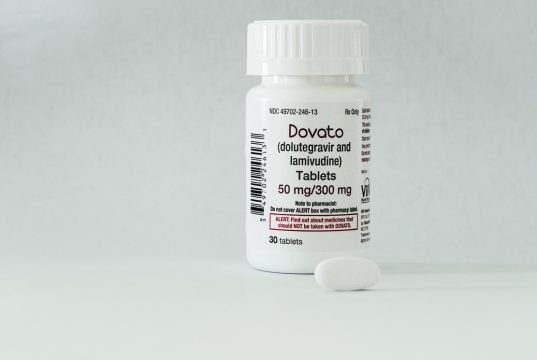Advertisment
Drug focus on diabetes

So what of the newer agents which might be considered as alternatives to sulphonylureas? There are three new classes of drugs licensed since the late 1990s – the glitazones, the DPP-IV inhibitors (also known as the gliptins) and the GLP-1 analogues. Only one of these – pioglitazone – is off patent, so the others are associated with a significantly greater acquisition cost. However, there are strong arguments for considering the direct and indirect healthcare costs of poor glycaemic control and drugs associated with significant risk of hypoglycaemia.
Pioglitazone, the only glitazone still available, was licensed in 1999. Rosiglitazone, approved at about the same time, became the subject of controversy in 2007 when a meta-analysis suggested that it was associated with a significantly increased risk of myocardial infarction and a borderline significant increased risk of death.8 In October 2010 the European Committee on Medicinal Products for Human Use recommended the withdrawal of rosiglitazone (Avandia, Avandamet) across the European Union, on the grounds of increased cardiovascular risk for rosiglitazone.9 There has been no similar concern about cardiovascular risk associated with pioglitazone – indeed, a meta-analysis showed that use of pioglitazone was associated with a significantly lower risk of death, myocardial infarction, or stroke. While both are associated with an increased risk of heart failure, the same meta-analysis showed no correlation between heart failure mortality and use of pioglitazone.10 However, there has been concern that pioglitazone may be associated with an increased risk of bladder cancer among patients taking the drug for more than 2 years.11 The European Medicines Agency has reviewed the evidence and concluded that ‘there is a small increased risk of bladder cancer associated with pioglitazone use. It is not clear if the risk increases early in treatment or only after prolonged administration. However, with careful patient selection, the benefits of pioglitazone continue to outweigh the risks.’ They recommend that pioglitazone should not be used in patients with a history of bladder cancer or in patients with uninvestigated macroscopic haematuria.12
There are now 4 DPP-IV inhibitors licensed – Saxagliptin, Sitagliptin, Vildagliptin and, most recently, Linagliptin. All work to reduce the breakdown of Glucagon-Like Peptide 1 (GLP-1), which enhances glucose-induced insulin secretion as well as reducing gastric emptying and promoting satiety.13 The glucose-dependent nature of its action means that the DPP-IV inhibitors, like the GLP-1 analogues, are not associated with hypoglycaemia either as monotherapy or in combination with metformin or glitazone treatment.14
Vildagliptin has been associated with liver problems, and patients are required to have liver function tests before initiation of treatment and at regular intervals on treatment.15 There is no such requirements for the other DPP-IV inhibitors. HbA1c reduction ranges from 0.64%16 to 0.84%14 compared to placebo, and they are non-inferior to sulphonylureas in this respect.17 For the most part, they have placebo-like tolerability and are weight neutral, making them an attractive option for many patients.14
The GLP-1 analogues provide a direct increase in GLP-1, but are working on the same hormone system as the DPP-IV inhibitors. Exenatide, given by twice daily injection, is superior to glitazone or DPP-IV inhibitor treatment in combination with metformin.18 So too is daily liraglutide, which reduces HbA1c by an average of 1.18%.19,20 They are significantly more expensive than all the oral agents and have to be given by injection, but they do have the advantage of promoting modest but statistically significant average weight loss of 2.9kg.21 The degree of weight loss varies greatly between patients, and the National Institute of Clinical Excellence recommends continuing treatment only if the patient’s weight reduces by at least 3% (and their HbA1c by ≥1%) at 6 months.22
Do we need to continue to add more agents to reduce HbA1c? Diabetes is a progressive disease, and the UKPDS study found that after 3 years on monotherapy, only 45% of patients, and after 6 years only 30% of patients remained at target HbA1c.23 If we are to help our patients avoid complications, the answer is almost certainly yes.
References are available on request.
Alpha-glucosidase Inhibitors
ACARBOSE (Glucobay)
INDICATION & DOSE: Adjunct to diet, alone or in combination with insulin or oral hypoglycaemic agents, in management of non-insulin-dependent diabetes mellitus (NIDDM); or as an adjunct to diet, in combination with insulin, in the management of insulin-dependent diabetes: Initiate: 50mg once or twice a day, chewed with first mouthful of food, or swallowed whole with a little liquid directly before meal, titrate to response and tolerability, usually 50mg tds. After 6-8 weeks’ treatment if inadequate clinical response, increase to 100mg tds, up to max. 200mg tds. Elderly: No adjustment. Children: No data.
CONTRAINDICATIONS: Patients with CrCl<25ml/min.
CAUTIONS: Regular liver function tests during prolonged treatment with drug; Not recommended for children under 18.
INTERNATIONAL PRODUCT AND GENERIC NAME(S): Glicobase, Glucobay, Glucor, Glumida, Prandase, Precose
********************
Biguanides
METFORMIN HYDROCHLORIDE
INDICATION & DOSE: Type 2 diabetes mellitus: Monotherapy and combination with other oral antidiabetic agents: Initiate: 500-850mg bd or tds during or after meals. After 10-15 days titrate slowly to response and tolerability, max. 3g/day. Combination with insulin: Initiate: 500-850mg bd or tds during or after meals, while insulin dosage is adjusted on the basis of blood glucose measurements. Elderly: Adjust dose based on renal function and monitor regularly. Children and adolescents >10yrs: Monotherapy and combination with insulin: 500-850mg once daily, given during meals or after meals. After 10-15 days slowly adjust on basis of blood glucose measurements and tolerability. Max. 2g/day.
CONTRAINDICATIONS: Diabetic ketoacidosis; CrCl<60ml/min; acute conditions with the potential to alter renal function; acute or chronic disease which may cause tissue hypoxia; hepatic insufficiency, acute alcohol intoxication, alcoholism; lactation; (with multi-ingredient products, see SPC).
CAUTIONS: Monitor renal function; consumption of alcohol should be avoided; risk of lactic acidosis; (with multi-ingredient products, see SPC).
INTERNATIONAL PRODUCT AND GENERIC NAME(S): Bigsens, Devian, Dextin, Diaberit, Diabetase, Diabetex, Diabetmin, Diabetosan, Diabex, Diaformin, Forminal, Fortamet, Gerformin, Glucamet, Gluconorm, Glucophage, Glucophage S, Glumetza, Glycon, Mediabet, Meglucon, Mengen, Mescorit, Metforal, Metformax, Metformin Tablets BP 1998, Metformine, Metiguanide, Metored, Metphage, Orabet, Riomet, Risidon, Siofor
********************
DPP-IV Inhibitors
LINAGLIPTIN
INDICATION & DOSE: Treatment of type 2 diabetes as monotherapy, or in combination with metformin or a sulphonylurea and metformin: 5mg once daily. When given with sulphonylurea, the dose of sulphonylurea may need to be reduced.
Special populations: Renal: No dose adjustment. Hepatic: Limited data, no dose adjustment. Elderly: No dose adjustment, limited data in >75yrs. Children: No data.
CAUTIONS: Risk of hypoglycaemia when given with sulphonylurea.
INTERNATIONAL PRODUCT AND GENERIC NAME(S): Tradjenta, Trajenta
********************
SAXAGLIPTIN
INDICATION & DOSE: To improve glycaemic control in patients with type 2 diabetes in combination with metformin, sulphonylureas, thiazolidinediones, or insulin (with or without metformin): Adults: 5mg daily, taken with or without a meal any time of day. The safety and efficacy of saxagliptin as triple oral therapy in combination with metformin and a thiazolidinedione, or with metformin and a sulphonylurea, has not been established.
Special populations: Renal: Mild: No dose adjustment. Moderate to severe: Limited data, not recommended. Hepatic: Mild to moderate: No dose adjustment, use with caution. Severe: Not recommended. Elderly: Use with caution if >75yrs. Children: Not recommended.
CAUTIONS: Sulphonylurea and insulin doses may need to be lowered when used in combination with saxagliptin. Monitor for skin disorders such as blistering or rash. Concomitant use with potent CYP3A4 inducers may lower effect of saxagliptin.
INTERNATIONAL PRODUCT AND GENERIC NAME(S): Onglyza
********************
SITAGLIPTIN
INDICATION & DOSE: Improve glycaemic control in patients with type 2 diabetes mellitus. May be used as monotherapy, as dual oral therapy (with metformin, sulphonylurea, or thiazolidinedione), as triple oral therapy (with metformin and sulphonylurea, or metformin and thiazolidinedione), or as an add-on to insulin with or without metformin: Januvia:100mg daily. When used with sulphonylurea or insulin, consider reducing sulphonylurea or insulin dose to reduce risk of hypoglycaemia. Renal: CrCl≥50ml/min: No dose adjustment. CrCl <50ml/min: Not recommended. Hepatic: Mild-Mod: No dose adjustment. Severe: Not recommended. Children: Not recommended.
Janumet: 50mg/850mg or 50mg/1000mg twice daily. When used with sulphonylurea or insulin, consider reducing sulphonylurea/insulin dose to minimise risk of hypoglycaemia. Renal: Not recommended if CrCl <60ml/min. Hepatic: Not recommended. Elderly: Use with caution, monitor renal function for prevention of lactic acidosis. Children: Not recommended.
CAUTIONS: Not for use in patients with type 1 diabetes; concomitant use with hypoglycaemic drugs increases risk of hypoglycaemia; caution in elderly; serious hypersensitivity reactions have been reported; pancreatitis has been reported; use with caution in renal impairment and monitor renal function .
INTERNATIONAL PRODUCT AND GENERIC NAME(S): Januvia
********************
VILDAGLIPTIN
INDICATION & DOSE: Treatment of type 2 diabetes as dual oral therapy in combination with metformin or a thiazolidinedione: 50mg twice daily. Treatment of type 2 diabetes as dual oral therapy in combination with a sulphonylurea: 50mg once daily in the morning.
Special populations: Renal: (CrCl >50ml/min): No dose adjustment; (CrCl <50ml/min): 50mg once daily, use with caution in patients with ESRD on dialysis. Hepatic: Not recommended. Elderly: No dose adjustments if >65yrs. Children: Not recommended.
CAUTIONS: Rare cases of hepatic dysfunction (including hepatitis) have been reported; use with caution in patients with NYHA class I and II; avoid use in patients with NYHA class III and IV; pancreatitis has been reported.
INTERNATIONAL PRODUCT AND GENERIC NAME(S): Galvus
********************
GLP-1 Analogues
LIRAGLUTIDE
INDICATION & DOSE: Type 2 diabetes mellitus in combination with metformin, a sulphonylurea, metformin and a sulphonylurea, or metformin and a thiazolidinedione. Adults: Starting dose 0.6mg liraglutide once daily without regard to meals, subcutaneously in the abdomen, thigh, or upper arm. Increase at weekly intervals to 1.2mg – 1.8mg daily.
Special populations: Renal: Mild: No dose adjustment. Moderate to severe: Limited data, not recommended. Hepatic: Not recommended. Children: Not recommended.
CAUTIONS: Consider reducing the dose of concomitant sulphonylurea to reduce risk of hypoglycaemia. Not recommended in patients with type 1 diabetes, inflammatory bowel disease, diabetic gastroparesis, or in those already using insulin. Use with caution in patients with CHF or pre-existing thyroid disease. Risk of pancreatitis may be increased. GI side effects may lead to dehydration and altered renal function.
INTERNATIONAL PRODUCT AND GENERIC NAME(S): Victoza
********************
Incretin Mimetics
EXENATIDE
INDICATION & DOSE: Treatment of type 2 diabetes mellitus in combination with metformin, sulphonylureas, thiazolidinediones, metformin and a sulphonylurea, or metformin and a thiazolidinedione in patients who have not achieved adequate glycaemic control on maximally tolerated doses of these oral therapies: Byetta: Initiate 5mcg SQ inj before morning and evening meal for at least one month to improve tolerability. Dose can then be inc. to 10mcg SQ inj bd to improve glycaemic control. Give within 60 min before the two main meals of the day, at least 6 hours apart; should not be given after a meal. Consider reducing dose of sulphonylurea with concomitant therapy; no dose reduction necessary with metformin or thiazolidinedione. Bydureon: 2mg SQ injection once weekly on the same day each week. Drug may be given any time of day, with or without meals.
Special Populations: Elderly: Caution in adults >70 years. Renal: (CrCl 50-80ml/min): No dose adjustment for Byetta or Bydureon. (CrCl 30-50ml/min): With Byetta, caution with dose escalation. Bydureon not recommended. (CrCl<30ml/min): Byetta and Bydureon not recommended. Hepatic: No dose adjustment. Children: No data in children <18yrs.
CAUTIONS: Not for use in patients with type 1 diabetes or patients with type 2 diabetes requiring insulin therapy due to beta cell failure; Nausea, vomiting and diarrhoea may occur-should not be used in patients with severe gastrointestinal disease; concurrent use with insulin, D-phenylalanine derivatives, meglitinides, alpha-glucosidase inhibitors, DPP-4 inhibitors, or other GLP-1 receptor agonists has not been studied; may reduce rate and extent of orally administered drugs, use with caution in patients treated with oral drugs with a narrow therapeutic index or requiring rapid absorption; rare reports of pancreatitis have been reported.
INTERNATIONAL PRODUCT AND GENERIC NAME(S): Bydureon, Byetta
********************
Meglitinides
NATEGLINIDE
INDICATION & DOSE: Combination therapy with metformin in inadequately controlled type 2 diabetes mellitus: Initiate: 60mg tds, within 30 minutes of meals, titrate to response and tolerability, up to 120mg tds, max. 180mg tds. Elderly: Data limited. Children and adolescents: Not recommended. Hepatic: Mild-moderate: No adjustment. Severe: Contraindicated. Renal: Mild-moderate: No adjustment. Moderate-severe: Consider dose adjustment.
CONTRAINDICATIONS: Type 1 diabetes; diabetic ketoacidosis; pregnancy and breastfeeding; severe hepatic impairment.
CAUTIONS: Not for monotherapy; not recommended in children.
INTERNATIONAL PRODUCT AND GENERIC NAME(S): Starlix
********************
REPAGLINIDE
INDICATION & DOSE: Non-Insulin-Dependent Diabetes Mellitus (NIDDM): Initiate: 0.5mg before main meal, titrate to response and tolerability in 1-2 week intervals. If transferred from another oral hypoglycaemic agent the recommended starting dose is 1mg. Maintenance: Max. single dose 4mg taken with main meals. Max. 16mg/day.
Special populations: Children: Not recommended. Elderly: No data. Hepatic: No data. Renal: Use with caution. Pts receiving other oral hypoglycaemic agents (OHAs): Max. starting dose 1mg given before main meals. With metformin: maintain metformin dose and give starting dose of 0.5mg, taken before main meals, titrate to response and tolerability as monotherapy.
CONTRAINDICATIONS: Type 1 diabetes; diabetic ketoacidosis; severe hepatic dysfunction; concomitant use of gemfibrozil.
CAUTIONS: Combination treatment with metformin increases risk of hypoglycaemia; use with caution with CYP2C8 inducers; not recommended for children; may increase incidence of ACS.
INTERNATIONAL PRODUCT AND GENERIC NAME(S): Gluconorm, Novonorm, Prandin
OTHER MEGLITINIDES: NATEGLINIDE
********************
Sulphonylureas
GLIBENCLAMIDE
INDICATION & DOSE: Non-Insulin-Dependent Diabetes Mellitus (NIDDM): Initiate: 5mg daily, titrate to response and tolerability at weekly intervals, usually 2.5-15mg daily. Doses of 10mg or less may be taken as single dose immediately before breakfast, but should daily dose exceed 10mg, remainder should be taken immediately before evening meal. Elderly: Usually require lower dosage. Secondary dosage adjustment: Requirements may fall as treatment proceeds. To avoid hypoglycaemia, timely dose reduction or cessation of therapy must therefore be considered.
CONTRAINDICATIONS: Insulin-dependent diabetes; present or history of diabetic ketoacidosis; serious impairment of renal, hepatic or adrenocortical function; intolerance of sulphonylurea or sulphonamides; brittle or juvenile diabetes; pregnancy and breastfeeding; children; patients treated with bosentan.
CAUTIONS: Hepatic or renal dysfunction may require dose reduction; haemolytic anaemia is possible in patients with G-6-phosphate-dehydrogenase deficiency taking sulphonylureas.
INTERNATIONAL PRODUCT AND GENERIC NAME(S): Abbenclamide, Azuglucon, Bastiverit, Bevoren, Calabren, Cliniben, Daonil, Dia-BASF, Dia-Eptal, DiaBeta, Diabetamide, Diacare, Euglucan, Euglucon, Euglucon N, Gen-Glybe, Gewaglucon, Gilemal, Gliben, Gliben-Puren N, Glibenclamide Tablets BP 1998, Glibenhexal, Glibesifar, Gliboral, Glimel, Glimidstada, Gluco-Tablinen, Glucobene, Glucolon, Gluconorm, Glucoremed, Glucovance, Glukoreduct, Glukovital, Glyben, Glyburide, Glyburide Tablets USP 23, Glycomin, Glycron, Glynase, Hemi-Daonil, Hexaglucon, Libanil, Malix, Maninil, Melbetese, Melix, Micronase, Miglucan, Neogluconin, Norglicem, Normoglucon, Orabetic, Praeciglucon, Semi-Daonil, Semi-Euglucon, Semi-Euglucon N, Semi-Gliben-Puren N, dia-basan, duraglucon N, gli-basan, glycolande N
OTHER SULPHONYLUREAS: GLICLAZIDE, GLIMEPIRIDE
********************
GLICLAZIDE
INDICATION & DOSE: Maturity-onset Non-Insulin-Dependent Diabetes Mellitus (NIDDM): Immediate release (IR): 80-320mg daily, titrate to response and tolerability. Modified release (MR): Initiate: 30mg daily in single dose at breakfast, swallow whole, titrate to response and tolerability at monthly intervals. Maintenance: 30-120mg daily, max. 120mg/day. Switching from 80mg IR tablets to 30mg MR tablets: One 80mg IR tablet is comparable to one 30mg MR tablet. Elderly: No adjustment. Children: No data.
CONTRAINDICATIONS: Pregnancy and breastfeeding; children; hypersensitivity to sulphonylureas; diabetes complicated by ketoacidosis; severe renal, hepatic, adrenal or thyroid dysfunction; unstable or brittle diabetes.
CAUTIONS: May need to reduce dose in renal or hepatic dysfunction; caution in patients with G6PD-deficiency.
INTERNATIONAL PRODUCT AND GENERIC NAME(S): Diabrezide, Diaclide, Diaglucide, Diaglyc, Diaglyk, Diamicron, Diaran, Gliclazide Tablets BP 1998, Glucomed, Glycron, Glygard, Uni, Vitile, Ziclin, Zycron
********************
GLIMEPIRIDE
INDICATION & DOSE: Treatment of type 2 diabetes: Initiate 1mg daily shortly before or during first main meal of day, may increase dose stepwise at 1-2 week interval if needed. Doses more than 4mg/day give better results only in exceptional cases, max. 6mg/day. Hepatic: Contraindicated. Renal: Contraindicated.
CONTRAINDICATIONS: Insulin-dependent diabetes; diabetic coma; ketoacidosis; severe renal or hepatic function disorders; hypersensitivity to sulphonylureas or sulphonamides; pregnancy and lactation.
CAUTIONS: Avoid large doses of drug in Glucose 6-Phosphate Dehydrogenase deficiency.
INTERNATIONAL PRODUCT AND GENERIC NAME(S): Amaryl, Amarylle, Diaglim, Euglim, Glamaryl, Glimehexal, Glycemager, Sulphonur
********************
Thiazolidinediones
PIOGLITAZONE HYDROCHLORIDE
INDICATION & DOSE: Treatment of type 2 diabetes as monotherapy, as dual therapy in combination with metformin or sulphonylurea, or as triple therapy in combination with metformin and sulphonylurea: Initiate 15mg or 30mg daily, may increase up to 45mg daily. Renal: No dose reduction with impaired renal function, no info in patients on dialysis. Hepatic: Not recommended in hepatic impairment. Elderly: No dose adjustment. Children: Not recommended if <18yrs. With metformin, treatment of type 2 diabetes: Competact:Usual dose: One tablet (pioglitazone 15mg/metformin 850mg) twice daily.
CONTRAINDICATIONS: Presence of or history of cardiac failure (NYHA stages I to IV); hepatic impairment; diabetic ketoacidosis; (with metformin, see SPC).
CAUTIONS: May cause fluid retention which can exacerbate or precipitate heart failure; monitor liver enzymes periodically; dose related weight gain may occur; may increase risk of fractures; may cause ovulation to resume in women with PCOS; use with caution with CYP2C8 inhibitors.
INTERNATIONAL PRODUCT AND GENERIC NAME(S): Actos
The information on medicines is taken from the monographs found at the International Drug Reference, www.idr.ie





